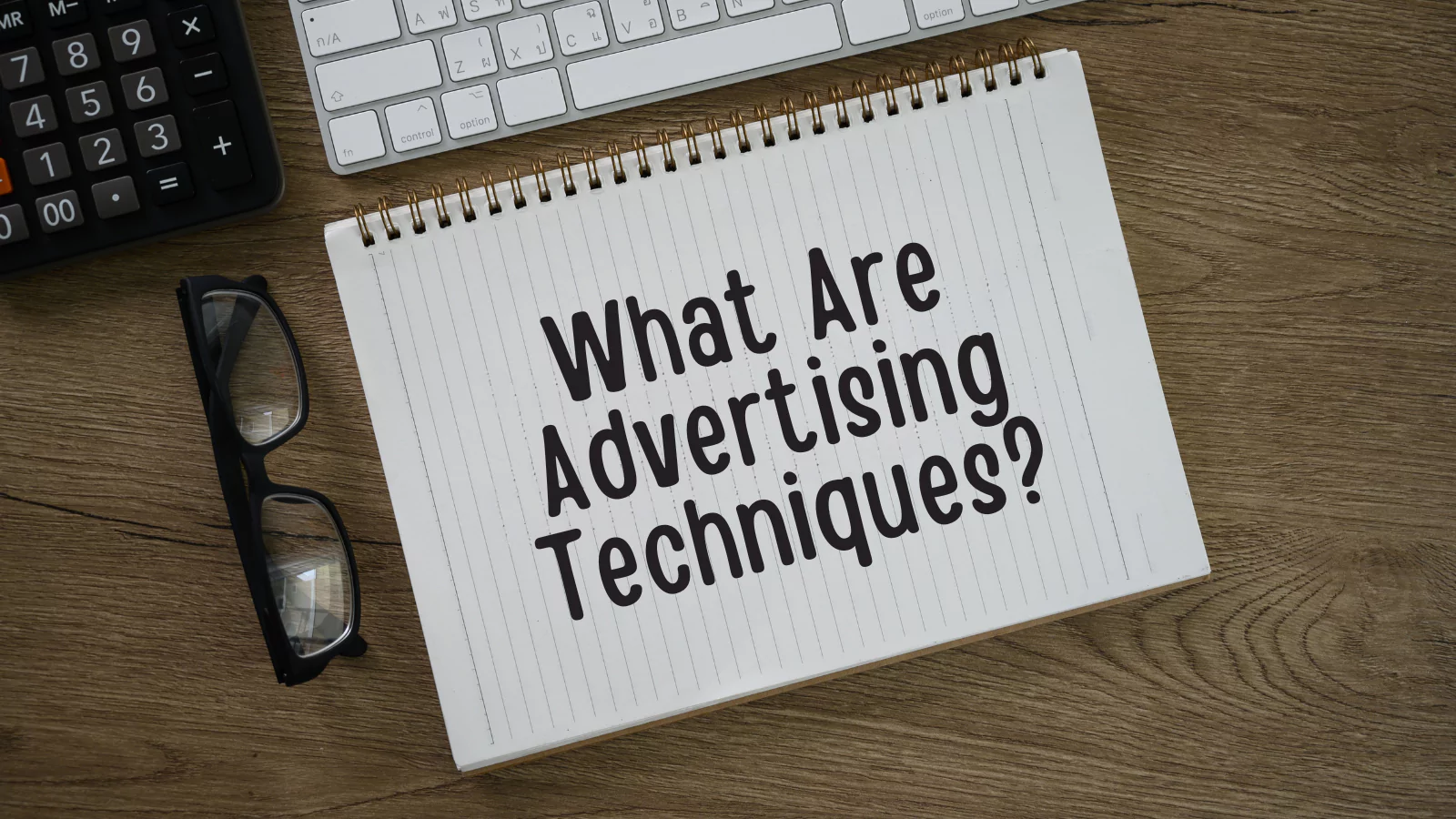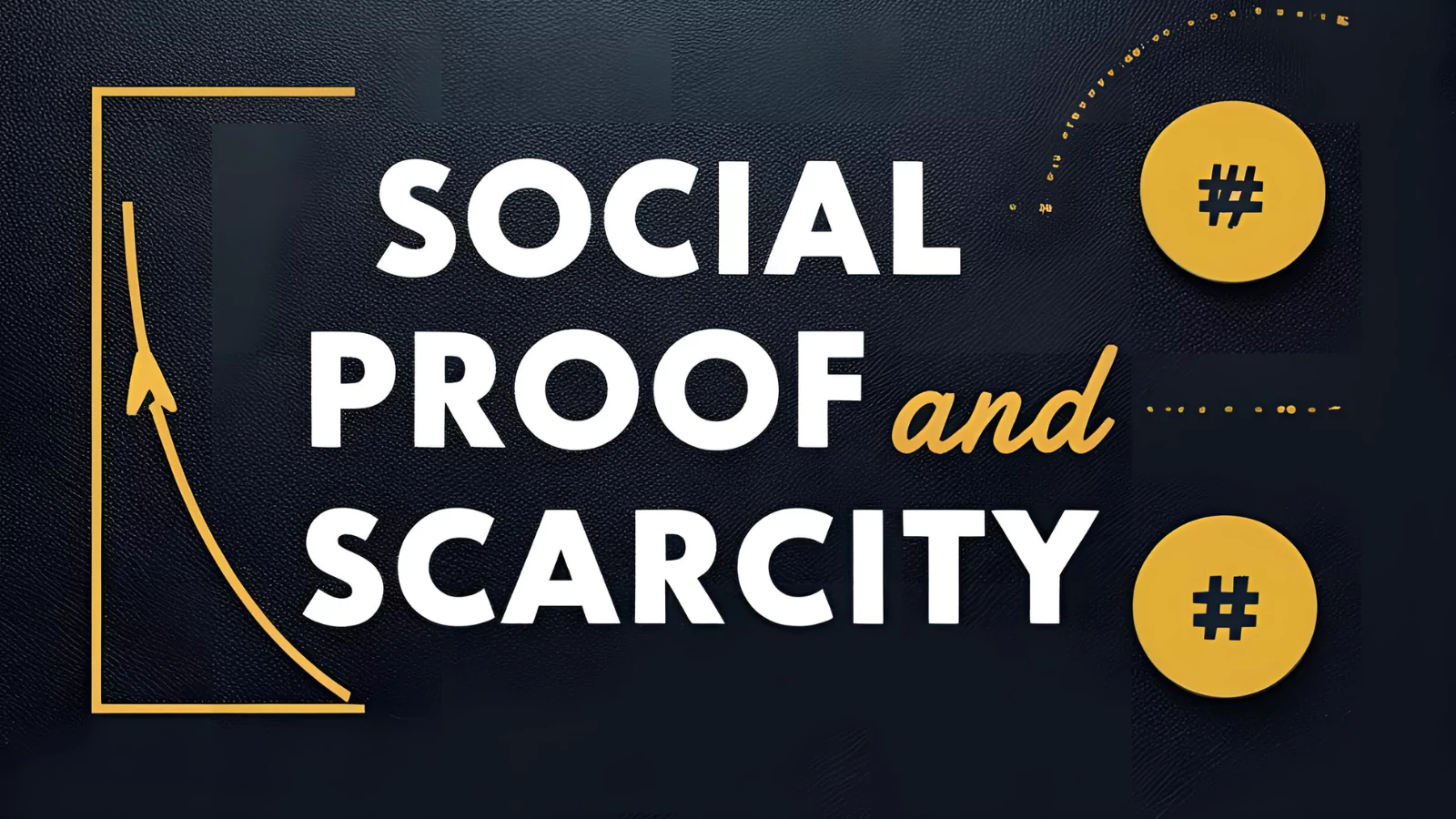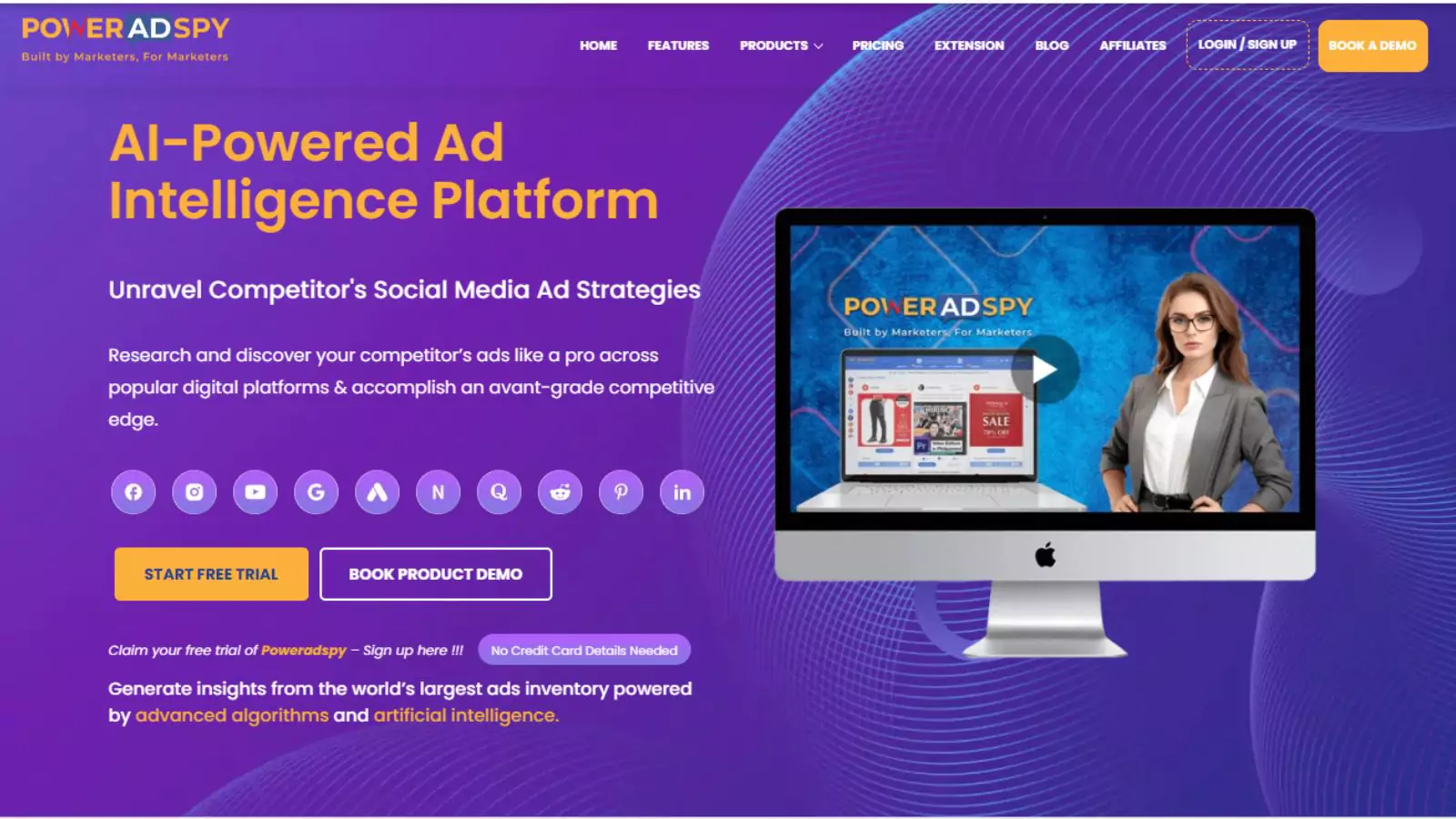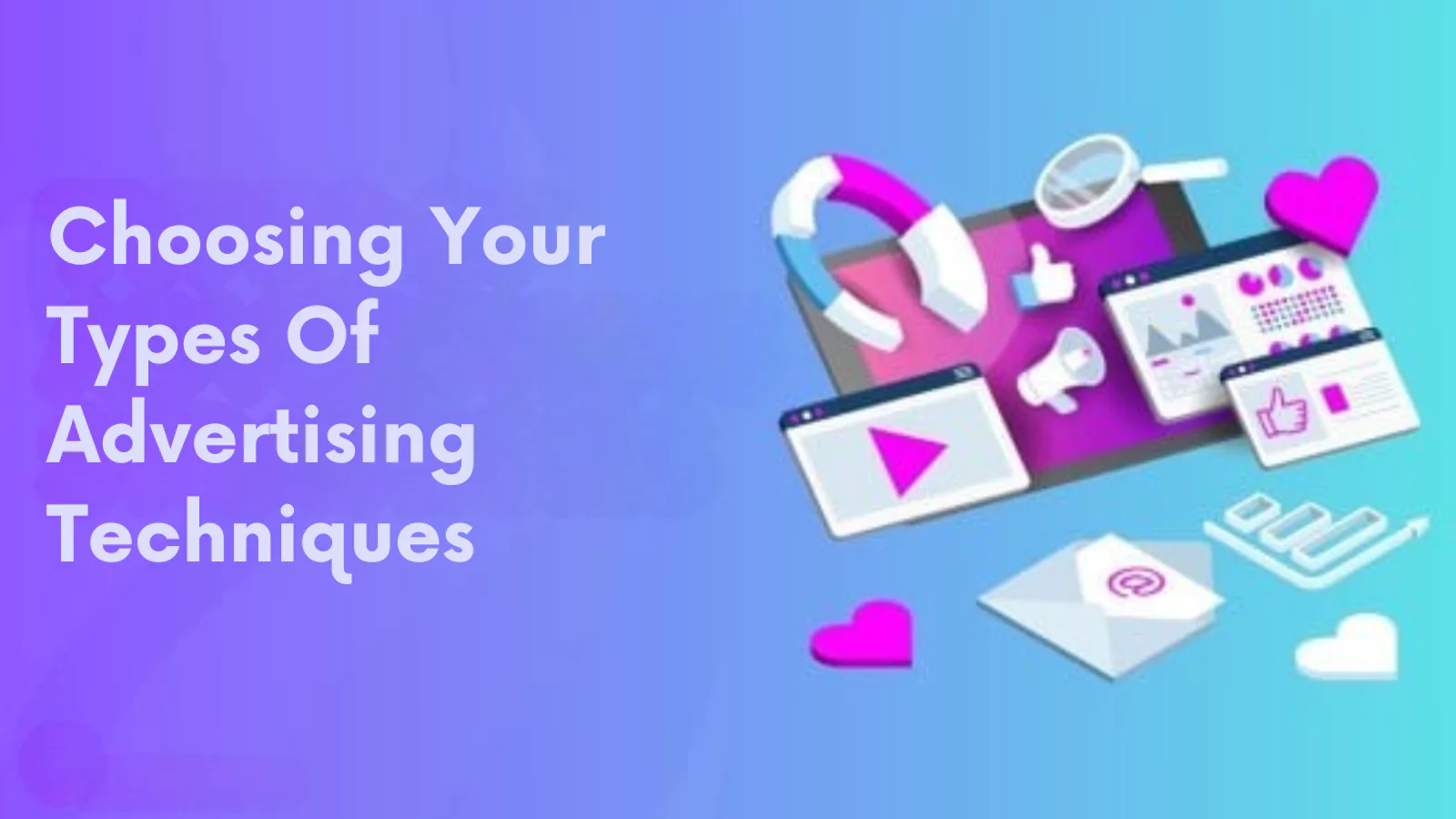How To Choose The Right Advertising Techniques For Your Brand?
Every scroll, every click, every swiped moment presents a fresh opportunity to connect with potential customers. But amid banners, pop‑ups, and sponsored stories, standing out demands more than a clever headline or glossy photo. What are advertising techniques, exactly? They are strategic visual, emotional, psychological, and data-driven approaches that move viewers from awareness to genuine interest and action. These methods combine science and creativity to deliver messages that inform, inspire, or persuade.
Understanding this toolkit is the first step toward mastering advertising techniques in your next campaign. As attention spans shrink, marketers must rethink every element of their designs and copy. Embracing these advertising techniques will set your brand apart. Also, we’ll explore how this Attention Challenge reshapes how ads are conceived and received.
In a hurry? Listen to the blog instead!
What Are Advertising Techniques?
 Wondering why you feel the need to click “buy” after watching an advertisement? Advertisers and advertising agencies use these carefully planned advertising strategies to grab your attention, evoke strong feelings, and inspire you to take action.
Wondering why you feel the need to click “buy” after watching an advertisement? Advertisers and advertising agencies use these carefully planned advertising strategies to grab your attention, evoke strong feelings, and inspire you to take action.
Think of these strategies as the foundation of effective marketing efforts, utilizing everything from the interactive aspect of digital advertising to the visual content of TV advertisements.
They employ a variety of strategies, such as the bandwagon technique, emotional appeal, and the tactical application of social media advertising, among other conventional advertising techniques. These tactics, which use Google Ads, internet advertising, and creative ads, are meant to strike a deep chord with viewers and establish connections that direct their attention to the “buy” button.
Advertising strategies incorporate all the components required to create a deep connection with the audience, from the main focus of print advertisements to the captivating flow of video content.
They use body language and the visual trail of an advertisement to evoke strong feelings and achieve the intended result, which eventually influences our choices in a never-ending barrage of communications.
Advertisers employ these strategies to make sure their message stands out in a crowded market, whether it is by creating a distinctive landing page or utilizing the influence of a well-known individual. They want to make an impact and increase click-through rates.
The Attention Challenge
 Scroll fatigue and ad blindness have become real barriers. Consumers rapidly tune out anything that looks repetitive or intrusive—tiny thumbnails vie with full‑screen video, and every extra second of loading risks losing a viewer forever. To combat this, brands must balance grabbing eyes and respecting time: deliver immediate clarity—no guessing games—and create moments of genuine surprise or delight that reward continued engagement.
Scroll fatigue and ad blindness have become real barriers. Consumers rapidly tune out anything that looks repetitive or intrusive—tiny thumbnails vie with full‑screen video, and every extra second of loading risks losing a viewer forever. To combat this, brands must balance grabbing eyes and respecting time: deliver immediate clarity—no guessing games—and create moments of genuine surprise or delight that reward continued engagement.
Effective advertising techniques here focus on speed and simplicity. Microinteractions, for instance, provide instant feedback without slowing down page loads. Likewise, concise messaging ensures that viewers grasp the offer in seconds. When you weave in well‑placed visual cues, you recapture wandering focus and sustain interest. Yet, simply grabbing attention won’t keep it; you need substance. To truly engage, brands must leverage Visual Persuasion, blending color, type, and metaphor in ways that feel fresh and intentional. In the next section, we’ll uncover how designers use these elements to decorate, & direct, and convince.
Visual Persuasion
 Visual storytelling is more than just pretty pictures. Every choice, from bold color palettes to carefully selected fonts, reveals something about a brand’s personality. Among the most powerful advertising techniques, visual persuasion helps shape how viewers perceive and respond to a message.
Visual storytelling is more than just pretty pictures. Every choice, from bold color palettes to carefully selected fonts, reveals something about a brand’s personality. Among the most powerful advertising techniques, visual persuasion helps shape how viewers perceive and respond to a message.
-
Color Psychology – Different colors trigger different emotions; for example, red creates urgency, while blue conveys trust.
-
Typography Choices – Fonts can signal brand personality, with bold styles suggesting authority and softer ones hinting at approachability.
-
Symbolism & Associations – Icons, logos, and imagery create instant recognition and cultural meaning.
-
Gestalt Principles – Viewers process visuals as unified wholes, so techniques like proximity and contrast guide the eye where advertisers want it.
Emotional Connection
Facts and figures can inform, but feelings inspire. Ads that evoke joy, nostalgia, or empathy do more than entertain. They create a moment of recognition where the viewer sees a piece of themselves. To build an emotional connection through advertising techniques, start with a story that reflects what truly matters to your audience.
Even in just a few seconds, a well-crafted narrative arc can spark laughter, stir memories, or trigger a sense of care and connection. Thoughtful humor breaks the ice; a poignant moment creates loyalty. Sincere storytelling amplifies brand values and forges deeper bonds.
The key lies in research: understanding your audience’s hopes, fears, and dreams lets you craft messages that feel authentic rather than forced. When viewers sense genuineness, they’re more likely to share and act. Still, emotion alone doesn’t always close the deal. Social proof and urgency can tip the scale from “I like it” to “I need it.” Let us dive into Social Proof & Scarcity, showing how community cues and limited availability drive real‑world responses.
Social Proof And Scarcity
 People are naturally drawn to what others are doing. It is a psychological shortcut rooted in human behavior. When we see others trusting a product or service, we instinctively feel more comfortable making the same choice. This concept lies at the core of two highly persuasive advertising techniques: social proof and scarcity.
People are naturally drawn to what others are doing. It is a psychological shortcut rooted in human behavior. When we see others trusting a product or service, we instinctively feel more comfortable making the same choice. This concept lies at the core of two highly persuasive advertising techniques: social proof and scarcity.
By highlighting testimonials, star ratings, or the sheer number of satisfied customers, brands can create an atmosphere of trust. Prospects feel like they are joining a movement, not just buying a product. Seeing a crowd of happy users reduces the sense of risk and builds confidence in the decision.
Influencer Power
Influencer marketing has become one of the most persuasive advertising techniques in recent years. Unlike traditional testimonials, influencers create a sense of relatability and trust at scale. When audiences see a familiar face showcasing a product, it works as an instant credibility boost and accelerates purchase decisions.
What makes influencer marketing powerful is its ability to blend authenticity with reach. From micro-influencers driving niche engagement to mega-creators pushing trends worldwide, brands are leveraging this approach as a modern form of social proof.
Creating A Sense Of Urgency That Drives Action
When scarcity is layered onto social proof, the effect becomes even more compelling. Limited-time promotions, exclusive releases, and visible stock counts encourage faster choices. These cues trigger a natural response—people want what they might not be able to get later. The fear of missing out becomes a motivator, pushing them toward quick action.
Strategically using influencers or well-known personalities further strengthens this approach. When a familiar face endorses a product, it feels like a personal recommendation. This combination of trust and urgency can nudge even hesitant customers to take the next step.
Together, social proof and scarcity help turn attention into intention and hesitation into action. However, once the message gets the viewer’s interest, the structure of the ad must support it to the finish line.
That’s where we move next: into data-driven design. In the following section, we’ll explore how the layout, colors, timing, and even micro-interactions informed by real performance data can enhance your emotional storytelling and improve overall ad effectiveness.
Data‑Driven Design
Numbers don’t lie, and neither do well‑crafted layouts. Applying the golden ratio or Gestalt principles ensures every component sits in harmony, guiding readers toward the most important message. A clear focal point—an image, headline, or call‑to‑action—anchors the eye, while supporting elements reinforce context. Data‑driven design stands among the more precise advertising techniques, combining logic and visuals to bolster credibility.
Overlaying concise facts or statistics lends authority, appealing to the rational side of decision‑making. Think: “75% of users saw a 20% boost in efficiency”—that single data point can outweigh paragraphs of prose.
These data‑driven choices reinforce trust: viewers know they’re seeing a carefully considered, credible offer rather than a haphazard pitch. But a one‑way message can grow stagnant. Modern audiences crave interaction, which leads us to our next exploration of Interactive & Experiential Methods that invite participation and deepen engagement.
Interactive And Experiential Methods
Real engagement begins when audiences shift from passive observers to active participants. Interactive features such as poll ads, swipeable carousels, and quizzes encourage users to take part in the experience. These elements make the content more memorable and enjoyable while fostering a deeper sense of connection.
Behind-the-scenes content adds authenticity, making brands feel more approachable and relatable. On the other end of the spectrum, placing products in imaginative or surreal settings can spark curiosity and drive conversations. These experiential advertising techniques elevate user involvement, increasing dwell time and the likelihood of sharing.
Guiding the Audience Through Participation
Immersive formats allow people to explore content at their own pace. Whether they pause to admire a standout image, tap to discover hidden details, or engage in a live poll, each action draws them further into the message. Even a simple “tap to see more” reveal can enhance engagement when executed thoughtfully.
While these creative elements capture attention, keeping everything aligned across multiple campaigns can become a challenge. Maintaining consistency, timing, and strategy requires more than creativity—it calls for insight.
It is where PowerAdSpy proves invaluable. With access to real-time data on top-performing ads, audience behavior, and platform-specific trends, PowerAdSpy helps streamline the creative process. Up next, we’ll look at how using smart tools like this one can tie all your techniques together for campaigns that connect and convert.
PowerAdSpy: Smarter Campaigns With An AI-Powered Ad Intelligence Tool
 Knowing what advertising techniques are is a solid start, but turning those techniques into high-performing campaigns takes strategy, precision, and the right insights. That’s where PowerAdSpy steps in. As a leading ad intelligence tool, it empowers marketers with real-time data to refine and elevate every stage of ad creation.
Knowing what advertising techniques are is a solid start, but turning those techniques into high-performing campaigns takes strategy, precision, and the right insights. That’s where PowerAdSpy steps in. As a leading ad intelligence tool, it empowers marketers with real-time data to refine and elevate every stage of ad creation.
Key Features That Turn Ideas Into Impactful Advertising:
- Creative Benchmarking: PowerAdSpy lets you explore winning ads from different industries, helping you understand which emotional tones, formats, and placements resonate most with your target audience.
- Real-Time Competitive Analysis: Monitor your competitors’ live campaigns, identify trending creatives, and spot gaps you can use to stand out—no more guesswork.
- Advanced Search Filters: Search by niche, engagement level, or CTA to uncover ads that align with your goals. Whether you’re tapping into social proof, urgency, or interactivity, find exactly what works.
- Cross-Platform Monitoring: Gain a unified view of campaigns running on Facebook, Instagram, YouTube, and beyond, ensuring you stay consistent across channels and adapt quickly.
- Data-Backed Decisions: Make confident, creative, and strategic choices based on analytics, not assumptions. PowerAdSpy turns inspiration into action by grounding every idea in measurable performance.
If you’re building campaigns that hinge on emotional storytelling, FOMO tactics, or interactive formats, PowerAdSpy helps keep everything aligned. With it, you’re not just following trends—making smarter, bolder moves that drive real results.
In the next section, we’ll dive deeper into how timing, platform behavior, and audience mood shape the success of every ad.
Choosing Your Types Of Advertising Techniques
 The right advertising technique can elevate your message, but not every method fits every brand. What works for one campaign might fall flat in another, so choosing wisely is key. Think of this process as strategic matchmaking between your brand’s voice, audience behavior, and campaign goals.
The right advertising technique can elevate your message, but not every method fits every brand. What works for one campaign might fall flat in another, so choosing wisely is key. Think of this process as strategic matchmaking between your brand’s voice, audience behavior, and campaign goals.
Start by considering a few essential factors:
Goal Alignment
What are you aiming to achieve—brand awareness, audience engagement, or direct conversions? Each objective calls for a different approach. Emotional storytelling often suits awareness, while urgency and social proof can drive quick decisions in conversion-focused ads.
Channel Context
The platform matters just as much as the message. Social media favors snappy visuals and interactive formats, whereas email or landing pages give you more room to explain and persuade. Match the content style to the environment where it will live.
Resource Availability
Have a lean team or a tight timeline? Go for techniques that rely on static visuals or user-generated content. If you’ve access to animation or video production, more immersive formats might be in your reach. The goal is to play to your strengths without sacrificing quality.
Performance History
Take a look at your previous campaigns. What formats and tones performed well? Which platforms delivered the most ROI? Past data can offer valuable clues to guide future creative choices.
As you explore different types of advertising techniques, remember—there’s no need to go all in right away. Small-scale tests let you observe what clicks with your audience and where to invest more. Once you’ve narrowed down what works, it’s easier to scale confidently and with purpose.
Examples And Applications of Advertising Techniques
Great campaigns don’t just happen — they’re built on smart advertising techniques that combine creativity with strategy. Beyond mascots and jingles, some of the most effective examples come from brands that tailor their approach to the psychology, values, and daily habits of their audience.
-
Airbnb – Relatability through User-Generated Content
Instead of polished ads, Airbnb highlights real hosts and travelers. This approach makes the brand feel authentic and trustworthy, showing that anyone can belong anywhere. It’s an advertising technique rooted in community storytelling, which resonates more strongly than product features alone. -
Spotify – Hyper-Personalization
Spotify’s “Wrapped” campaign is a brilliant example of personalized advertising. By turning user data into fun, shareable stories, Spotify transforms ads into social currency. This technique drives viral sharing without feeling like traditional marketing. -
Dove – Social Advocacy Marketing
Dove’s “Real Beauty” campaigns use cause-driven advertising techniques, tying the brand to body positivity and inclusivity. Instead of selling soap, Dove sells values, which builds long-term trust and cultural relevance. -
Tesla – Scarcity and Exclusivity
Tesla rarely runs traditional ads. Instead, it relies on scarcity-based techniques, leveraging limited availability, waiting lists, and Elon Musk’s social presence to build hype. This flips conventional advertising on its head while keeping demand high. -
Heineken – Experiential Campaigns
Heineken often invests in experiential techniques, like global sports sponsorships and interactive campaigns. These ads tie the brand to memorable experiences rather than just the product.
Read More:
Creativity: The Secret Ingredient To Every Ad Campaign
What Makes Emotional Appeal Advertising So Powerful Today?
7 Popular Types of Advertisements To Help You Reach Your Audience
Conclusion
In a world overflowing with digital noise, mastering the right advertising techniques isn’t just about staying competitive. It’s about creating campaigns that feel personal, purposeful, and powerful. From grabbing attention with bold visuals to building trust through social proof and sparking action with urgency, every technique plays a role in shaping how your brand is seen and remembered.
But real success lies in knowing when and how to use each approach. That’s where tools like PowerAdSpy give you the edge, offering clarity, direction, and data that turns inspiration into strategy. So, whether you’re just experimenting or optimizing a multi-channel campaign, remember this: great ads aren’t just seen. They’re felt, shared, and acted on.
Start refining your strategy today, and let your ads do more than just show up—they should stand out.
FAQs
- How do colors influence consumer behavior in advertising?
Colors can trigger emotions and reactions that influence buying decisions. For example, red often creates a sense of urgency and excitement, while blue builds trust. Strategic color choices can make ads more persuasive by aligning with brand messaging and audience psychology.
- What’s the role of storytelling in persuasive advertising?
Storytelling helps create emotional connections. When an ad tells a relatable story, it humanizes the brand and builds empathy, making consumers more likely to engage with or purchase from the brand. This technique adds depth beyond traditional selling.
- Can humor be effective in persuasive techniques in advertising?
Yes, humor can break down resistance, grab attention, and make brands more likable. However, it must align with your audience’s tone and avoid overshadowing the core message. When done right, it leaves a lasting impression.
- Are persuasive techniques in advertising equally effective across all platforms?
Not always. What works on Instagram might not translate well to LinkedIn. Each platform has its user behavior and content style, so persuasive techniques should be tailored to the specific audience and medium for the best results.
- How important is consistency in using persuasive messaging across campaigns?
Consistency builds brand recognition and trust. When your messaging stays true to your voice and values across various campaigns, it reinforces your position in the market and makes your persuasive efforts more believable and effective.






